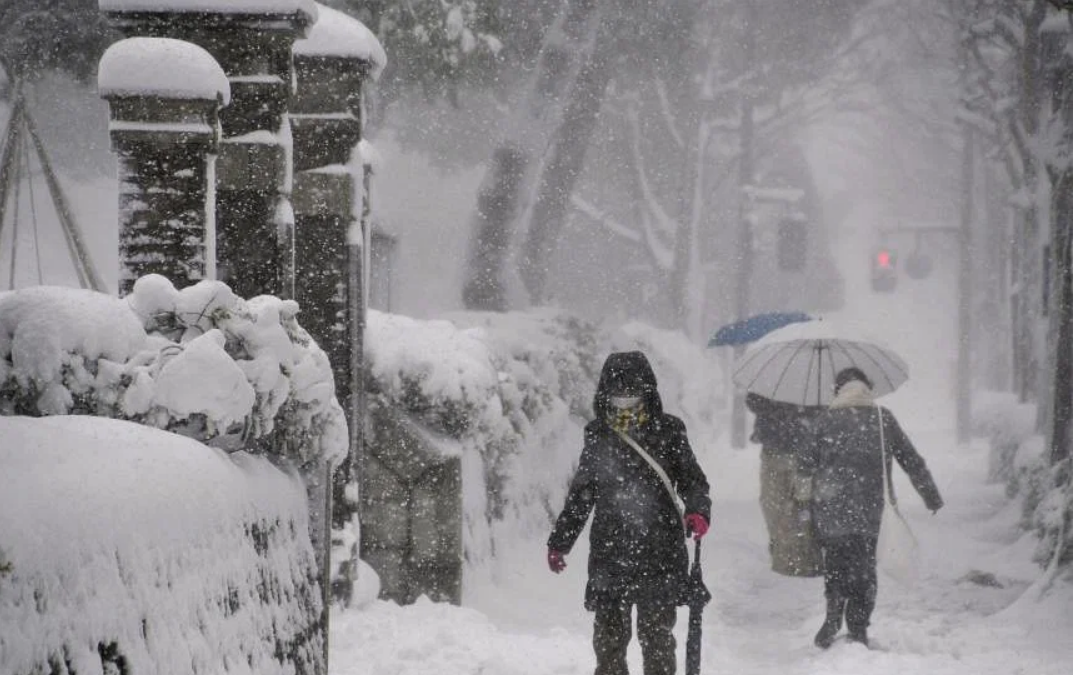Japan warns of dangerous white Christmas as heavy snowfall forecast

TOKYO At least 13 people have died and 19 seriously injured in Japan since last Saturday, with an extreme cold snap dumping heavy snow and bringing strong winds across wide areas from Hokkaido in the north to Kyushu in the south-west.
Providing these figures on Friday morning, Disaster Prevention Minister Koichi Tani joined Prime Minister Fumio Kishida in calling for extreme vigilance over the Christmas weekend.
They urged those in regions where a blizzard is forecast to stay indoors and to refrain from going out unless absolutely necessary.
One hiker, from Hong Kong, is fighting for his life after he was stranded while climbing the 2,077m Mount Tokachi in Hokkaido, media reports said. He was with two other hikers, both of whom are safe.
About 200 domestic flights were cancelled on Friday, with road closures reported over 58 sections on 15 expressways.
Power blackouts affected at least 10,000 homes on Friday including about 2,700 homes on Sado Island in Niigata prefecture that have gone without power for five days and counting.
There has also been infrastructure damage, with roofs blown away and electrical poles felled in Hokkaido. In the town of Erimo, also in Hokkaido, about half of 244 solar panels were uprooted.
The Japan Meteorological Agency has issued heavy snow warnings across large parts of the country until Monday.
These warnings do not cover the Greater Tokyo region, which is forecast to be bright and sunny this weekend.
Still, the calls for caution come as the dangers of prolonged weather events such as heavy snow, heavy rain and heat waves are often underestimated in comparison with one-off natural disasters.
Many of the fatalities occurred during snow removal work, with home owners falling off roofs as they clear snow or getting buried under snow cascading off rooftops as they clear their driveways.
One died of carbon monoxide poisoning. Ms Sayaka Arakawa, 27, in Niigatas Kashiwazaki city, was found dead on Tuesday in her car, which was snowed under.
The authorities believe that she had sought warmth in her car after her home was hit by a blackout, and fell asleep in it.
The largest cause of light injuries were people who slipped and fell while walking or due to car accidents on slippery roads.
The weatherman said the ongoing cold snap was due to a strong and slow moving winter-type atmospheric pressure pattern along the Sea of Japan, which South Korea refers to as the East Sea.
Residents of Kyoto woke up to a light dusting of snow on the roof of the Kinkaku-ji (Golden Pavilion) on Friday morning.
The nearby Nara, known for its free-roaming deer in Nara Park, was also blanketed in white for the first time in years.
Areas in western and southern Japan, which are otherwise not used to snow accumulation, saw record snowfall, including prefectures such as Hiroshima, Kochi and Kumamoto. In Hiroshima, Shobara city recorded up to 47cm of snowfall in the 24 hours ending at 9am on Friday. The Atomic Bomb Dome, in Hiroshima city, was blanketed in 5cm of snow.
Over in Kochi, on the island of Shikoku, a record 14cm of snowfall was set in the six hours to 10am.
On Tuesday, 800 cars were stranded over a 22.5km stretch in Nagaoka and Kashiwazaki in Niigata prefecture, with the Self-Defence Forces called in to assist with snow removal. It took 38 hours to lift the road closure.
On Friday, more than 100 vehicles were stranded in Kochi, while another 50 vehicles were stuck between the cities of Minamata in Kumamoto prefecture and Isa in Kagoshima prefecture. More On This Topic Winter comes roaring in with massive snow storm in many parts of America Winter storm pummels north-central US with snow, spawns tornadoes in South